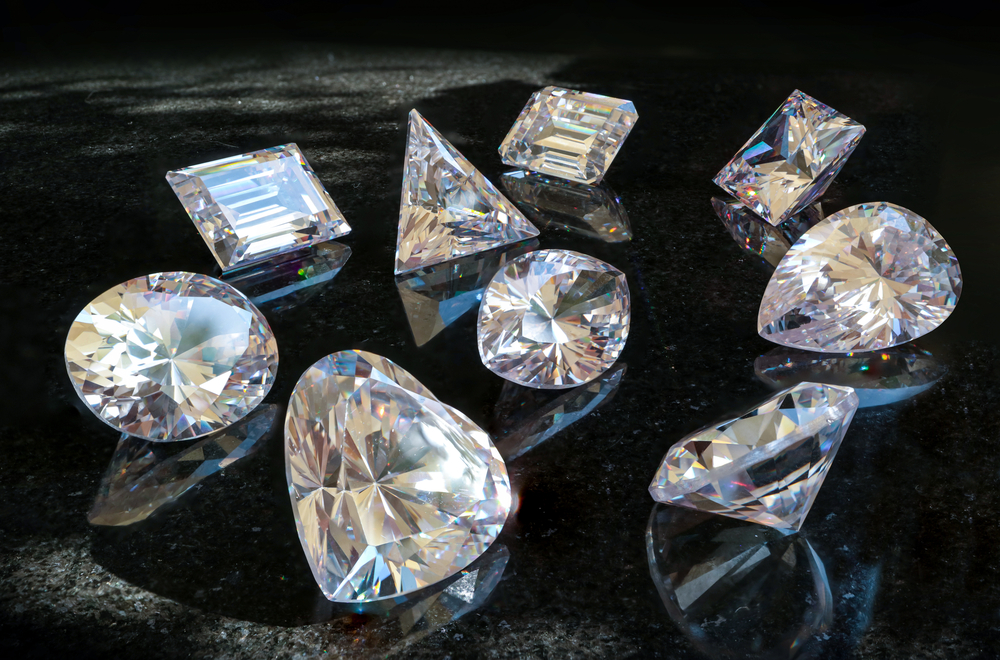Introduction
Diamonds have long been the symbol of luxury, love, and timeless beauty. For decades, consumers had only one option: mined diamonds extracted from the earth through labor-intensive and often controversial processes. But with advances in technology, lab grown or man made diamonds have emerged as a strong and often superior alternative. As consumers become more ethically and environmentally conscious, the debate between mined or lab grown diamonds, man made diamonds has intensified. This article explores the essential differences, advantages, and considerations involved in choosing between these two types of gems.
What Are Lab Grown or Man Made Diamonds?
Lab grown diamonds, also known as man made or synthetic diamonds, are real diamonds created using advanced technological processes that replicate the conditions under which natural diamonds form in the earth’s mantle. Unlike simulants such as cubic zirconia or moissanite, man made diamonds are chemically, physically, and optically identical to natural diamonds.
There are two primary methods for creating lab diamonds: High Pressure High Temperature (HPHT) and Chemical Vapor Deposition (CVD). Both techniques produce diamonds that are nearly indistinguishable from mined ones, even to professional gemologists without specialized equipment.
The Science Behind Mined vs. Man Made Diamonds
Natural diamonds are formed over billions of years through intense heat and pressure deep beneath the earth’s crust. They are then brought closer to the surface via volcanic eruptions, where they are eventually mined. This process is both costly and environmentally invasive.
On the other hand, lab grown diamonds are created in a matter of weeks. HPHT simulates the extreme conditions of the earth, while CVD grows diamonds from a carbon-rich gas in a controlled chamber. Despite the rapid formation process, the end product is virtually the same. The main difference lies in origin—not in quality.
Cost Comparison and Value
One of the most significant advantages of man made diamonds is their price. Lab grown diamonds can cost 30% to 50% less than their mined counterparts of comparable size and quality. This pricing difference makes diamonds more accessible to a broader audience without compromising on aesthetics or performance.
However, resale value is an area where mined diamonds still have a slight edge. Traditionally, natural diamonds have held their value better in the secondary market. That said, the growing popularity and acceptance of lab grown stones may change this dynamic in the coming years.
Environmental and Ethical Considerations
The diamond mining industry has long been criticized for its environmental toll and human rights concerns. The process of extracting diamonds from the earth often results in deforestation, habitat destruction, and pollution of local water sources. Additionally, some mined diamonds—especially those originating from conflict zones—have historically funded violence and war, hence the term “blood diamonds.”
Lab grown diamonds offer a more ethical and sustainable alternative. They require significantly less land and water and do not involve exploitative labor practices. For socially conscious buyers, this is often a compelling reason to choose man made diamonds over mined ones.
According to a report Frost & Sullivan, lab grown diamonds have a carbon footprint that is approximately seven times smaller than mined diamonds. In terms of water usage, lab created diamonds consume 18 gallons per carat compared to 126 gallons for mined stones. These statistics highlight the environmental benefits of choosing lab grown over traditional options.
Appearance and Quality: Can You Tell the Difference?
To the naked eye, there is no visible difference between a high-quality lab grown diamond and a mined one. Both types can achieve the same level of brilliance, fire, and sparkle that diamonds are prized for. Certified reputable labs such as GIA or IGI, man made diamonds are graded using the same standards: cut, clarity, color, and carat.
While some purists may prefer natural diamonds due to their geological origin, more and more consumers are embracing the idea that beauty and quality need not come from the earth’s crust. In fact, lab diamonds can sometimes be purer, as they are grown in controlled environments with fewer inclusions.
Market Trends and Consumer Preferences
The diamond market is evolving rapidly. In the last decade, the acceptance and popularity of lab grown diamonds have skyrocketed. In 2016, lab grown diamonds accounted for less than 1% of global diamond sales. By 2024, that number had grown to nearly 10%, and it continues to rise as consumers become more aware and interested in sustainable options.
Major jewelers such as Pandora and Brilliant Earth have already pivoted toward offering only lab grown stones. Even traditional luxury brands are beginning to explore the potential of this market, suggesting a broader industry shift. For younger buyers—especially Millennials and Gen Z—values like sustainability, ethics, and affordability play a significant role in purchasing decisions.
Emotional and Symbolic Value
A diamond often marks life’s most meaningful moments—engagements, weddings, anniversaries. While some argue that the rarity of mined diamonds adds sentimental value, others believe that love and commitment are symbolized more the act of giving than the stone’s origin. As society becomes more forward-thinking, the emotional significance of mined or lab grown diamonds, man made diamonds is increasingly seen as a personal choice rather than a rigid tradition.
Conclusion
The debate over mined or lab grown diamonds, man made diamonds is not simply a matter of geology—it’s a reflection of changing values, advancing technology, and evolving markets. Both options have their merits. Mined diamonds offer natural allure and long-standing prestige, while lab grown diamonds provide a more ethical, affordable, and sustainable path to owning a beautiful gemstone.
Ultimately, the best diamond is one that aligns with your values, budget, and vision. Whether formed deep within the earth or crafted in a state-of-the-art lab, a diamond’s true brilliance lies in what it represents to the person wearing it.


